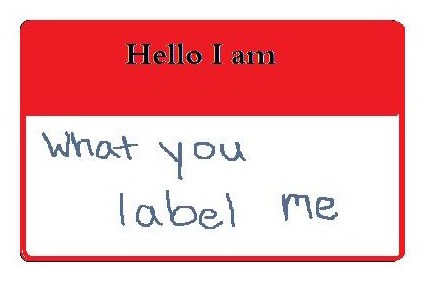Langer and Abelson (1974)
 Langer & Abelson carried out a study on how labels can influence diagnosis. You can use this study for the following learning objectives:
Langer & Abelson carried out a study on how labels can influence diagnosis. You can use this study for the following learning objectives:
Ethical considerations in diagnosis.
Validity and reliability of diagnosis.
The original study is available here.
The aim of this study was to see if labelling an individual as a patient, would he be perceived as more disturbed than if he were labelled as a job applicant. The researchers also wanted to see if different psychological orientations would demonstrate differences in how they label the individual.
The researchers used a 2 X 2 factorial design: that is, there were two levels of a variable tested at two levels.
Forty subjects; either behavioural or psychodynamic therapists affiliated with one of three universities: State University of New York Stonybrook, New York University and Yale: graduate students, post-grads or faculty. The mean age for both groups was around 28 years old. Each group was randomly allocated to either the job applicant or the patient condition.
The videotape was an interview by a professor of a younger man of about 26 years. The interview was unstructured. It focused on the interviewees’ feelings and experience relating to his past work. The interviewer’s voice was eliminated from the video as much as possible so that the viewers would focus on behaviour and not on the actual responses to the questions. The video was also edited down to only 15 minutes.
The participants were interviewed in a room at their own school. They were either told that the researcher was learning how to carry out job interviews – or to carry out patient interviews. The participants were instructed to watch the video and then to fill out a questionnaire. In order to make the label salient, when the video finished, the researcher handed the participant the questionnaire and said, “Here is the patient (or job applicant) evaluation form.”
The questionnaire was made up of “free-response” questions. Questions included a description of the interviewee, his attitudes and factors that probably influenced his view on life. The data was then quantified by graduate students who were blind to the hypothesis or to the groupings. They were asked to rate each of the 40 randomly ordered clinicians’ questionnaires on a scale from 1 (very disturbed) to 10 (well adjusted). The inter-rater reliability of the judges was .76.
In order to make sure that the therapists held different theoretical orientations, a biographical questionnaire was given after the completion of the session. The final question asked them what school of psychology they identified with as a therapist.
| Job Applicant Label | Patient Label | |
| Stonybrook (Behaviourist) | 6.26 (n = 10) | 5.98 (n = 11) |
| NYU (Psychodynamic) | 5.88 (n = 5) | 2.40 (n = 5) |
| Yale (Psychodynamic) | 6.52 (n = 5) | 4.80 (n = 4) |
The results indicate that both the psychodynamic groups' ratings averaged on the “disturbed” side of the scale. It also shows that there is no significant difference between the ratings of the job applicant, but the psychodynamic ratings are significantly lower in the case of New York University.
Even though both conditions watched the same video, there was a clear difference in the descriptions of the interviewee. Behaviour therapists used words like “realistic”, “unassertive, fairly sincere, enthusiastic, attractive, pleasant, relatively bright and responsible. The psychodynamic therapists, when told that they were seeing a job interview, described him as attractive, candid and innovative, upstanding, middle-class, fairly open, somewhat ingenious. When told he was a patient, they described him as tight, defensive, conflicted over homosexuality, passive-aggressive, frightened of his own aggressive impulses, tries to seem brighter than he is, impulsive, considerably hostile or rigid in thinking.
The study is rather dated and may lack temporal validity.
The study has a very small sample size. The results may be mathematically significant, but it is difficult to generalize beyond the programs of the universities. There is also a sampling bias, with all participants affiliated with the university.
The research does not tell us why the behaviour therapists were immune to labelling. The argument is that the Psychodynamic therapists tend to focus on dispositional factors, whereas the behaviourists tend to look at situational factors. But we do not know if this is the case in this study.
The study may be more of a criticism of psychodynamic therapy than on the reliability of diagnosis or the effects of labelling.
Gove and Fain (1973) carried out extensive interviews with 429 former mental health patients. The vast majority stated that diagnosis had led to an improvement in their social relationships. Only a small minority of former patients (19) reported exclusively negative outcomes as a result of their diagnosis.

 IB Docs (2) Team
IB Docs (2) Team
